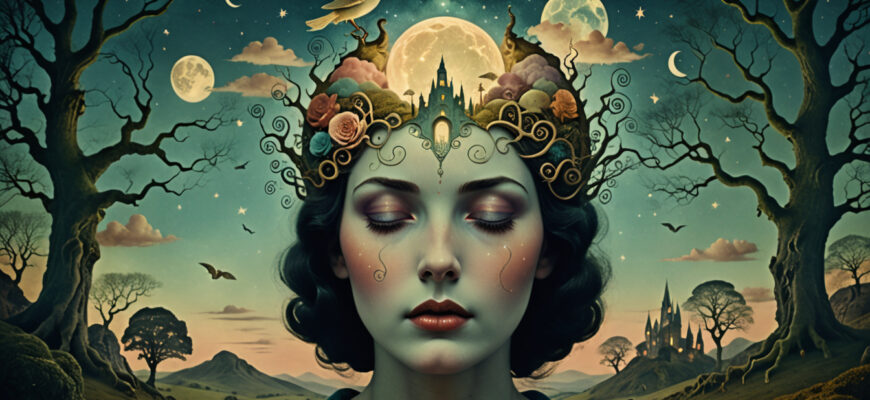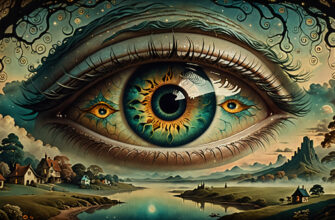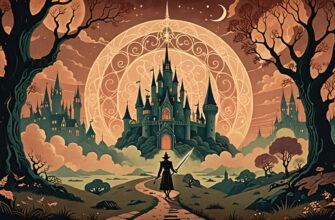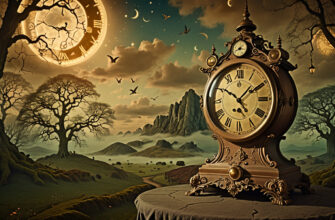Have you ever woken up from a dream where a head stood out — maybe your own, someone else’s, or even a fragmented one? The head in dreams often sparks questions about who we are underneath everything. It’s more than just a body part; it’s an emblem of identity, intellect, and power. Why do these images haunt our sleep, or sometimes inspire us to pay closer attention to our inner world? When dreams zoom in on the head, it’s like a spotlight on core parts of ourselves—our selfhood, how we think, and how we step into authority or sometimes feel pushed out of it.
Dreams tend to communicate through symbols familiar to us, and body parts are no exception. They’re windows into the emotional and psychological terrain we might not access easily while awake. The head, in particular, stands at the crossroads of our sense of identity and intellect. Think of it as the throne room where your inner ruler—the one who decides, leads, and sets boundaries—resides. By tuning into how the head shows up in dreams, we get clues about where we feel confident, where power feels shaky, or where the mind is wrestling with trauma or conflicting voices.
- Understanding The Significance Of Heads In Dreams
- Common Head Imagery In Dreams And Their Meanings
- The Psychological Layer: Heads As Mirrors Of The Mind And Power Dynamics
- Spiritual and Symbolic Reflections on Heads in Dreams
- Intersectional Perspectives: Marginalization, Trauma, and the Dream Head
- The Head Dream as a Cosmic Weather Report on Self and Leadership
Understanding The Significance Of Heads In Dreams
The head is often the first thing people recognize about identity. It’s the seat of consciousness, containing not just physical senses but the outlines of the self—our beliefs, memories, and personality.
Here’s why the head gets so much spotlight in dreams:
- Identity & Selfhood: When the head is vivid in a dream, it can highlight questions of who we are in the moment. Are we feeling integrated or fragmented? Proud or diminished? The head becomes a symbol for integrity and self-awareness.
- Intellect & Decision-Making: Since the brain is housed here, dreams that focus on the head often reflect the clarity or fogginess of our thoughts. Is the head clear and bright, or is it clouded or hurt? That imagery speaks volumes about mental states.
- Authority & Power: The head can represent control—over oneself or from external forces. A strong, healthy head in a dream might signal grounded leadership, while a damaged or vulnerable head hints at inner conflicts or anxieties about losing control.
Paying attention to the head in dreams can reveal truths about how aligned someone feels with their own voice, choices, and outward presence. Unlike other body parts, the head carries emotional weight around both intellect and sovereignty in a way that’s deeply personal.
Common Head Imagery In Dreams And Their Meanings
Dreams feature heads in a range of forms, each telling a different story about the dreamer’s inner landscape. Here’s a close look at some common head-related images and what they might be saying:
| Head Imagery | Symbolic Meaning | Emotional/Psychological Tone |
|---|---|---|
| Healthy Head | Clarity, wisdom, grounded selfhood | Confidence, stability, peace |
| Wounded or Damaged Head | Trauma, vulnerability, internal conflict | Fear, anxiety, fragmentation |
| Multiplied Heads | Fragmented identity, multiplicity, tension in self-expression | Confusion, overwhelm, pressure |
| Crowned Head | Leadership, sacred power, self-sovereignty | Empowerment, spiritual authority, radical self-trust |
Healthy heads often promise moments of clarity or growth. Think of a dream where the head feels strong and bright—it might be inviting trust in your wisdom or urging rootedness in yourself.
In contrast, damaged or wounded heads call attention to unresolved pain or fear. A fractured or bloody head in a dream isn’t just shock value; it marks places where inner wounds exist—sometimes pulling from real trauma that’s begging to be understood.
Dreams multiply heads to represent the many versions of self present at once—this can mean juggling conflicting identities, feeling “too much,” or struggling to speak all parts of your truth at once. It can also point toward neurodivergence, trauma layering, or fluid identities, especially within queer and feminist contexts.
Finally, crowned heads carry sacred vibes. They resonate with spiritual leadership and reclaiming power. From a queer and feminist lens, crowns aren’t about hierarchy alone but about self-sovereignty—holding space to lead, heal, and wield authority grounded in authentic being. This kind of imagery might feel like a cosmic invitation to take up your rightful place in the world without apology.
The Psychological Layer: Heads As Mirrors Of The Mind And Power Dynamics
Beyond symbolism, the way heads appear in dreams often mirrors deeper mental and emotional struggles. Have you had dreams where your head betrays you or slips out of your control? These moments can echo battles with inner authority—the way different parts of the psyche vie for control or how outside forces influence your sense of agency.
People experiencing mental health challenges might find head dreams probing fragile or intense spaces. For example:
- Headaches or pain in dreams could be a psychic cry to slow down or seek support.
- Disembodied or severed heads may mimic feelings of dissociation or fragmentation common during trauma.
- Multiplying heads might symbolize racing thoughts, multiple identities, or internal conflict across intersecting aspects of self.
These images show up uniquely depending on lived experiences. For folks in marginalized bodies or identities, head dreams often engage with systemic dynamics of power and oppression. Trauma breaths through these images, calling attention to what parts of self or history remain “cut off” or unheard.
Here are some reflection prompts to hold alongside your own head dreams:
- How does the dream’s head imagery reflect your current sense of control over your mind and life choices?
- Are you witnessing any internal conflict about who gets to “hold the crown” in your daily experience?
- In what ways might your dream reveal hidden vulnerabilities or strengths in your relationship with authority?
The head in dreams asks you to lean in with compassion and curiosity—there’s power and wisdom waiting when the images are met with honest attention.
Spiritual and Symbolic Reflections on Heads in Dreams
What if your dream about a head isn’t just a random image but a sacred coded message from your deeper self? The head in dreams often acts as more than flesh and bone—it holds spirit, wisdom, and cosmic insight. Across cultures, the head has been seen as a vessel where spirit and knowledge converge, bridging earthly existence with divine realms. It’s the seat of intellect, intuition, and awareness, inviting dreamers into spiritual reconnaissance.
These dreams can carry many layers. On one level, ancestral wisdom might emerge—think of a stone or bronze head guarding ancient secrets, a symbol of lineage and cultural roots. On another level, contemporary queer-feminist interpretations breathe new life and fluidity into this traditional symbol, acknowledging multiplicity and non-binary identities. A head in dreams isn’t confined to rigid, binary meaning; it can flex, multiply, fragment, and evolve, reflecting complex selfhood.
Crowned heads often signal the call to sacred leadership and divine selfhood. Like a quiet summons to recognize both your innate power and your responsibility to wield it with grace, these visuals ask: How do you lead yourself spiritually? Crowns imply sovereignty over internal kingdoms, a reminder that leadership begins in honoring your own essence.
Recognizing multiplicity in head symbolism opens pathways to embrace the fragmented, fluid, or non-binary parts of identity. Dreams where heads multiply or appear fractured might resonate with feelings of being scattered or expansive beyond traditional self-concepts. Honoring this complexity fosters acceptance of all aspects, from shadow fragments to luminous facets, weaving a more inclusive spiritual narrative.
Ask yourself these questions when heads appear in dreams—What spiritual message is being whispered through these images? Are you being invited to reclaim ancestral wisdom, embody sacred leadership, or sit with your multifaceted self? Such reflection helps decode your dream’s deeper spiritual language, opening doors to healing and cosmic alignment.
Intersectional Perspectives: Marginalization, Trauma, and the Dream Head
Dreams often carry scars along with healing, especially when marginalization or trauma is part of your story. Dream imagery about the head can reveal the intimate ways trauma imprints on identity and body consciousness. For many, especially in marginalized communities, the head in a dream might appear wounded, fragmented, or under siege, mirroring real-life struggles with control, representation, and safety.
The head is not just a passive symbol but a battleground of oppression and resistance. A damaged or severed head might reflect experiences of silencing or erasure, while a glowing or crowned head may represent defiant resilience and self-affirmation. These dreams reveal the dual realities marginalized people face—the burden of trauma alongside fierce reclamation of power.
Within the dreaming mind, there’s space to reimagine self-sovereignty and body autonomy. Dreams offer a playground for testing new narratives, where fractured identities can be healed or reassembled, where power stolen in waking life can be reclaimed and redefined. The head becomes a site of transformation, where wounds are named and strength reborn.
Queer and feminist interpretations particularly emphasize self-knowledge as liberation. When a dream presents multiple heads or non-binary symbolism, it can feel like a ritual of healing and discovery—an embodied knowing beyond rigid societal categories. These images affirm that selfhood is a fluid, healing process, resisting narrow definitions imposed by history, trauma, or systemic inequality.
Think through these reflections: How might your head dreams connect to your ancestors’ struggles or your own battles with power, identity, and safety? What aspects of your lived experience call for tender acknowledgment, resistance, or integration? Using these questions, dreams become guides for reclaiming voice and sovereignty.
The Head Dream as a Cosmic Weather Report on Self and Leadership
When heads take the stage in dreams, they often echo cosmic rhythms that influence readiness for change and leadership. Astrologers might read these images in tune with planetary cycles, recognizing them as more than personal symbols—they are a cosmic weather report about inner authority and transformation.
Dreams featuring the head can signal critical junctures: moments when the self is invited to step up, heal, or evolve in alignment with larger cosmic forces. For example, a crowned or radiant head might coincide with transits emphasizing leadership or spiritual awakening. Conversely, a fragmented head could reflect moments of challenge, urging inner work to reclaim wholeness.
Interpreting head dreams through astrology encourages conscious engagement with personal power. It asks: How prepared are you to answer a call that transcends ego and taps into deeper wisdom? How can dream insights guide your navigation of healing and leadership? Reflecting on such questions turns dreaming into an active dialogue with the cosmos.
Affirmation: You were born for this. The dream’s message urges trust in your inherent capacity to lead, heal, and transform. By honoring this calling, you align both your inner world and external presence with the universe’s unfolding energy patterns.








